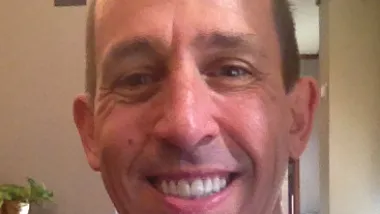In the last six months I have been fortunate to work in a variety of communities - from rural counties in Pennsylvania and Virginia, to small towns and cities in New Mexico and New York, to larger cities in Alaska, Connecticut, and Virginia. Each place has suddenly been confronted with the advent of new dollars. New money at any point in time is a valuable, and especially scarce resource. But in this economy this is even more the case. As communities are faced with reduced sales and property taxes, and consistent demand for services, any new funds are a welcomed addition to the work of balancing the books.
In the last six months I have been fortunate to work in a variety of communities - from rural counties in Pennsylvania and Virginia, to small towns and cities in New Mexico and New York, to larger cities in Alaska, Connecticut, and Virginia. Each place has suddenly been confronted with the advent of new dollars. New money at any point in time is a valuable, and especially scarce resource. But in this economy this is even more the case. As communities are faced with reduced sales and property taxes, and consistent demand for services, any new funds are a welcomed addition to the work of balancing the books.
At the same time, new money also brings with it an opportunity. In this case, the monies appropriated by Congress for communities to address the consequences of the foreclosure crisis represent a chance to ask some fundamental questions at the local level, that go something like this:
1. This new "neighborhood stabilization" money is more or less an extension of current housing and neighborhood monies. That is, housing affordability dollars (gap closing funds), capacity building dollars (organizational dollars), neighborhood funds (anti-blight, infrastructure, and planning resources). With these new "neighborhood stabilization funds", should our community continue to do what we've always done, only now with more money to do it with?
2. If we want to know whether or not to do something new with this new pot of dollars, or something else, might we make that decision on the basis of whether or not what we have done has proven successful? If we have been successful, we should probably keep doing what we've been doing. If we haven't been successful, maybe we should try something else?
3. In determining the best course, maybe we should take a hard look at our efforts and ask if indeed we have or have not been successful. Without necessarily indicting past work, perhaps at least this will tell us whether to improvise. Certainly the NSP dollars Congress passed have flexibility to permit this.
What I am seeing across the country though, in cities and towns alike, in rural and urban areas, is very little reflection on past work. The same assumptions that have always been in play remain so. Weak neighborhood challenges continue to be seen as problems solved by more subsidy. Problems associated with foreclosure consequences are defined evaluating in terms of "housing needs". Targeting is being misinterpreted to mean working in the toughest areas. Consequently every organization imaginable is coming out of the woodwork seeking a piece of this suddenly enlarged pie, and local jurisdictions are maybe missing the chance to define HERA dollars not as more, but as something else: BOTH resources to address subprime lending problems, AND an excuse to evaluate and take stock.
One thing is certain, North Philadelphia looks more or less as it did 15 years ago, as does South Central, as does Anacostia, West Baltimore, and countless other places that need a different approach that the customary interpretation.
NSP plans are due January 20. Every community in America is wrestling with the work of determining how best to spend these funds. Step one probably begins with an assessment of the success of previous efforts. This most likely requires thinking critically about the definition of success. In many cases, more of the same is not likely to generate a different outcome.

Analysis: Cybertruck Fatality Rate Far Exceeds That of Ford Pinto
The Tesla Cybertruck was recalled seven times last year.

National Parks Layoffs Will Cause Communities to Lose Billions
Thousands of essential park workers were laid off this week, just before the busy spring break season.

Retro-silient?: America’s First “Eco-burb,” The Woodlands Turns 50
A master-planned community north of Houston offers lessons on green infrastructure and resilient design, but falls short of its founder’s lofty affordability and walkability goals.

Test News Post 1
This is a summary

Analysis: Cybertruck Fatality Rate Far Exceeds That of Ford Pinto
The Tesla Cybertruck was recalled seven times last year.

Test News Headline 46
Test for the image on the front page.
Urban Design for Planners 1: Software Tools
This six-course series explores essential urban design concepts using open source software and equips planners with the tools they need to participate fully in the urban design process.
Planning for Universal Design
Learn the tools for implementing Universal Design in planning regulations.
EMC Planning Group, Inc.
Planetizen
Planetizen
Mpact (formerly Rail~Volution)
Great Falls Development Authority, Inc.
HUDs Office of Policy Development and Research
NYU Wagner Graduate School of Public Service


























